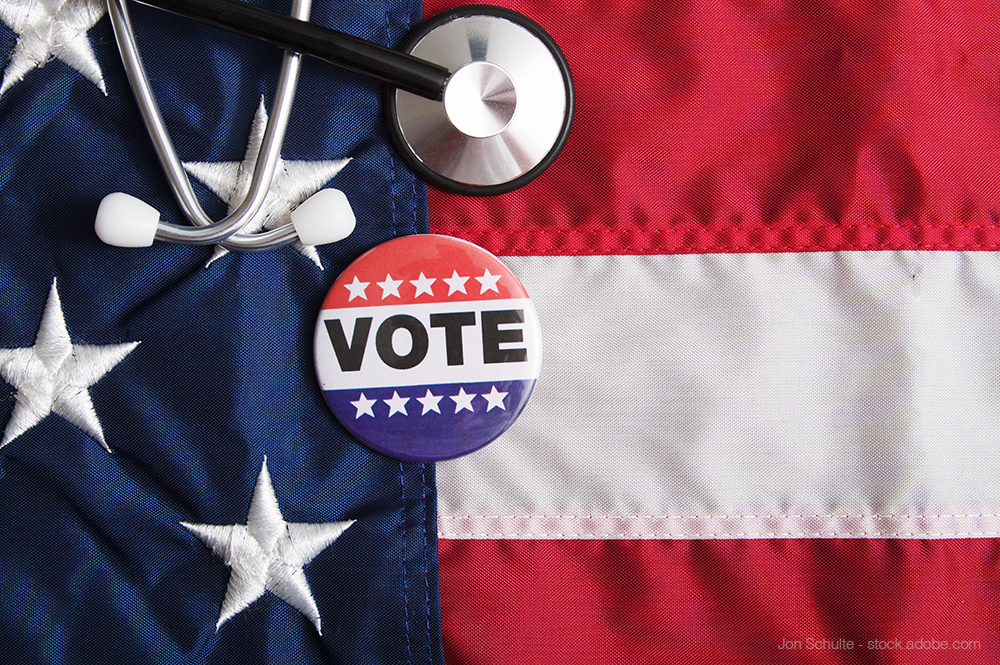Rural Health Predicted To Be a Priority in 2020 Election
The importance of increasing healthcare quality and access in rural areas transcends political party lines.

Leanne Berge

Patients and providers alike struggle with many obstacles when it comes to providing healthcare in rural areas.
According to the National Rural Health Association, eonomic factors, cultural and social differences, educational shortcomings, lack of recognition by legislators, and the isolation of living in remote areas all conspire to create healthcare disparities and inequality.
A new poll conducted by the Bipartisan Policy Center and American Heart Association found that nine in 10 voters say access to healthcare in rural communities is important and three in five voters would more likely vote for a candidate who prioritized it. Former Senate Majority Leader Tom Daschle (D-South Dakota) is co-chairing a new Bipartisan Policy Center rural health task force with former Sen. Olympia Snowe (R-Maine) to recommend policies for improving rural health in the United States.
These findings and the prioritization of the topic indicates that rural health will be a big issue in the 2020 election.
“This is not surprising when you think about the importance healthcare access has as an issue to the average voter across the country, and the role it played in the 2018 elections,” says Leanne Berge, CEO, Community Health Plan of Washington. “For those living in rural areas, the challenges are often more pronounced. Recent challenges include the opioid epidemic, behavioral health service shortages, high costs of drugs, and provider work-force issues. The added pressures on financially strained rural hospitals have exacerbated long-standing problems. Hospital associations and many state policy makers have been particularly focused on options for shoring up local community hospitals in rural areas.
On the federal side, the response has been mixed, according to Berge. “While there is a bi-partisan concern, threats to the ACA directly threaten rural healthcare access,” she says.
Related: Three Strategies That Improve Access to Rural Healthcare
Rural healthcare consistently faces multiple challenges. “First, rural hospitals are increasingly losing volume as more care is provided in outpatient settings and fewer beds are filled,” Berge says. “In addition, rural hospitals are heavily dependent on Medicaid and public programs, which traditionally pay at lower reimbursement rates than commercial business.”
The populations of these communities are also struggling economically, even in a low unemployment economy, according to Berge.
“Many laborers and migrants are uninsured, underinsured, or dependent on Medicaid. The opioid epidemic has hit many of these communities hard. In addition, the chronic labor shortages for licensed clinicians has been worsened by tightening immigration policies and more attractive opportunities in urban and suburban areas,” she says. “Demographic shifts generally have exacerbated the existing problems. Federally Qualified Health Centers (FQHCs) play a very important role in improving access to healthcare in rural communities. They have focused on transportation needs, telemedicine solutions, and assistance with social needs that impact health, like food and housing.”
FQHCs, as well as managed care plans like Community Health Plan of Washington, have community-based programs to improve access to services like medication-assisted treatment for opioid addiction, and whole person care (behavioral health, physical health, and oral health) that improve health in rural communities, according to Berge.
“The factors that have been particularly challenging to rural healthcare in the past are increasingly top of mind because in some areas, these trends have reached a crisis point and healthcare generally is being recognized as a critical political issue,” she says. “The importance of access to quality healthcare is something everyone agrees upon, but the solutions are hotly debated today.”
Any solution to the challenges of rural health will have a major impact on all healthcare policy and business, according to Berge.
“For example, as insurance coverage is a problem in rural areas, the solution will likely require changes across the system,” she says. “Workforce shortages require solutions that will impact healthcare systems in non-rural areas. And, development of solutions, such as telehealth, need to involve the support and engagement of healthcare executives across all regions. Reimbursement and payment models require broad participation to be effective. And all healthcare executives need to be concerned about the unsustainability of high-cost drug trends, opioid abuse, and poor access to healthcare for major pockets of our citizens.”
Doing More and Saving More with Primary in Home Care
September 1st 2021In this week’s episode of Tuning In to the C-Suite podcast, MHE Associate Editor Briana Contreras interviewed VillageMD’s Senior Medical Director of Village Medical at Home, Dr. Tom Cornwell. Dr. Cornwell discussed the main benefits of primary care at home, which includes the benefit of cost savings for patients, maintaining control of hospital readmissions and others. Dr. Cornwell also noted what has changed in the industry of at-home care and if there has been interest from payers like insurance companies and medicare in the service.
Listen